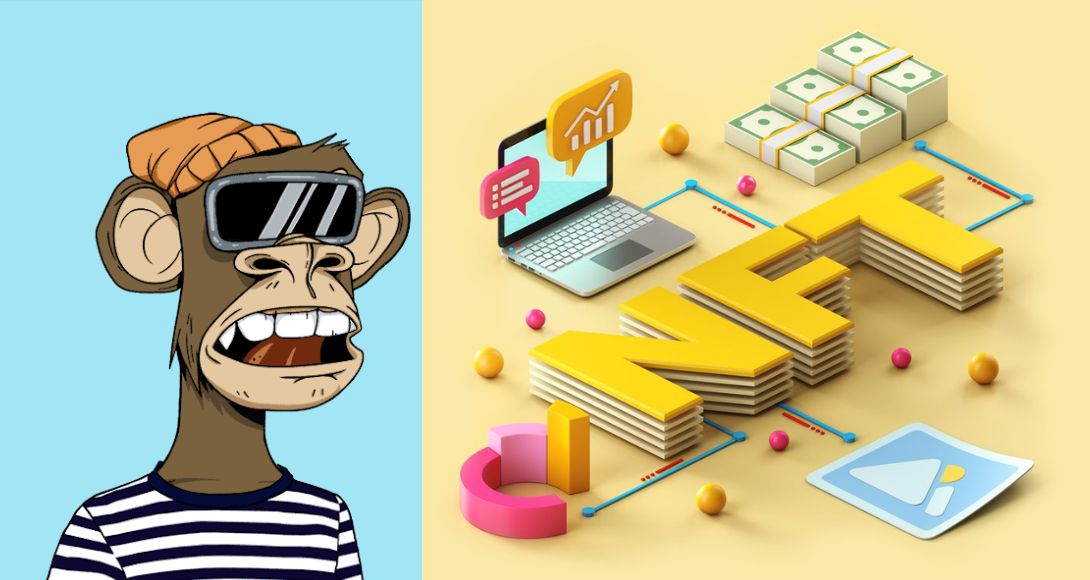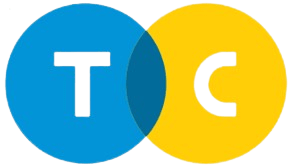Non-fungible tokens (NFTs) have been the topic of much discussion, and it appears that everyone is aware of this recent development.
Beeple’s First 5000 Days is now the most expensive NFT art acquisition since 2021.
Additionally, you’ve certainly heard of other well-known NFTs like Doge NFT, CryptoKitties, CryptoPunks, Jack Dorsey’s first tweet, and others.
OpenSea, NBA Top Shot, and Decentraland are some other NFT marketplaces. They help traders and artists make profitable deals.
The NFT market appears poised to continue growing and astonishing us with even more exceptional and astounding NFT initiatives, based on what we’ve seen thus far.
It’s crucial to think about which blockchain your project will run on if you’ve grown passionate about NFTs and want to launch your own campaign.
As a result, we suggest delving into some technical details and investigating the most well-liked blockchains utilised for the NFT Marketplace Development, particularly Ethereum, Flow, Binance Smart Chain, Cardano, and Solana.
Factors to think about
Choosing the blockchain that will best serve as the foundation for your NFT campaign is becoming more difficult given the range of blockchains available today.
Consider a few criteria before developing an NFT or platform. Speed, consensus, smart contract functionality, and cost are included.
Your NFT campaign’s ultimate success depends greatly on how quickly transactions occur on the blockchain. Some blockchains have faster transaction rates than others, which translates to the ability to process a greater volume of transactions per second.
Transaction expenses are also significantly impacted by transaction speed. Users must pay greater fees to miners to ensure that their transaction will be given priority over others on a blockchain with a low throughput.
Not all works of NFT art are sold for astronomical sums of money. Contrarily, the vast majority of NFTs (in-game products and digital collectibles) are reasonably priced and accessible to the typical user.
Why pay hefty transaction costs for a piece of art that isn’t expensive? The widespread adoption of NFTs depends on relatively low transaction costs. To encourage additional users to the NFT platform, the chosen blockchain should ideally feature a feeless structure.
Smart contracts, which are used by all NFT platforms, are in charge of determining the terms of a deal between a buyer and a seller.
Smart contracts that are complex and well-written often provide the platform’s complete security. Because of this, it’s crucial to confirm that the blockchain platform of choice has dependable and strong smart contract capabilities.
Learn about the blockchain’s smart contract programming language as well. For instance, if you choose Ethereum, which uses Solidity, it can take a while to find qualified Solidity developers because this programming language is a rather uncommon specialty. However, obtaining well-known experts in a different, more popular language like C++ is not that tough.
Now that you are aware of the factors to consider when selecting a blockchain for NFT development, let’s examine the most well-known blockchains and learn more about their features.
Ethereum, which was introduced in 2015 by Vitalik Buterin, is ahead of the curve and is presently the most popular blockchain for NFT applications. It has a sizable development community, which is a big plus because any issues can be effectively corrected and new, cutting-edge features are regularly added. Additionally, developers may find a tonne of technical documentation on Ethereum that is quite helpful for creating dApps or smart contracts.
The two well-known token standards, ERC-721 (used to create non-fungible tokens) and ERC-1155, are both driven by Ethereum (used for the creation of new semi-fungible tokens). The bulk of NFTs currently in use are built on these two standards, and it’s likely that this trend will continue.
Additionally, Ethereum just put up EIP-2309 as a new standard. This should make it possible to mint NFTs more successfully and provide users the freedom to mint as many tokens as they like in a single transaction.
Solidity, an object-oriented programming language developed by the Ethereum team and compiled by the Ethereum Virtual Machine, is used by Ethereum to implement smart contracts (EVM). The blockchain also has a cryptocurrency it calls Ether (or ETH). Additionally, Ethereum supports over 460,000 token contracts built on its ERC-20 token standard. Tether (USDT), Basic Attention Token (BAT), USD Coin (USDC), ChainLink (LINK), and Dai are some of the top cryptocurrency initiatives (DAI).
In comparison to other blockchains, the transaction fee for Ethereum fluctuates depending on network congestion and is typically between $20 and $70 per transaction. Additionally, Ethereum has limited throughput, which limits the number of transactions it can process per second to roughly 13–15.
The Ethereum 2.0 upgrade, which promises to enhance transaction capacity and reduce gas fees, has promised to address all those problems. Ethereum will finally switch from a PoW to a PoS consensus to enable this, which is anticipated to have a good effect on the entire Ethereum network and, most importantly, the environment.
You should probably be aware that CryptoKitties and CryptoPunks were both created on the Ethereum blockchain if you’ve ever heard of them. By the way, Visa just paid $150,000 for one item from a CryptoPunks collection of 10,000.
The majority of the top NFT exchanges with the highest trading volumes were built on Ethereum, with OpenSea, Rarible, Nifty Gateway, KnownOrigin, SuperRare, and Decentraland emerging as the most notable examples.
Flow, which was introduced as early as 2020, has caught the interest of many cryptocurrency fans and is usually mentioned as a strong Ethereum substitute.
With improved scalability, composability, and, most crucially, top user experience, Flow’s creators plan to make it the greatest platform for consumer applications.
“Flow’s on track to deliver blockchain technology to billions and put a blockchain wallet into everyone’s pocket,” the Flow community claims.
Dapper Labs, a Canadian business that created CryptoKitties, is the firm behind Flow. A whole ecosystem of applications, notably those related to gaming and digital collectibles, can be powered by this PoS-based blockchain.
Flow uses upgradeable smart contracts powered by Cadence, the Flow creators’ programming language. The blockchain’s multi-node, multi-role design includes consensus, execution, collection, and verification processes.
Notably, the Flow blockchain’s exceptional performance—it can complete 10,000+ transactions per second—is one of its best qualities.
NBA Top Shot is unquestionably one of the most prosperous examples of the marketplaces built on Flow. As of this writing, its daily trade volume is $1.1M, and there are more than 106K transactions every day. Since its public beta testing phase began in October 2020, it has enabled more than 3 million transactions overall. Other Flow-powered applications include xtingles, BloctoBay, and TuneGO.
Additionally, Flow comes with its own set of APIs and offers comprehensive instructions on how to utilise them.
A blockchain that syncs with the Binance Chain is called the Binance Smart Chain (BSC).
Its interoperability with the Ethereum Virtual Machine gives it more sophisticated smart contract capabilities (Solidity and Vyper).
This logic aims to create extensive smart contract capabilities while keeping Binance Chain’s high throughput.
BSC is a completely independent blockchain that can continue to run even if Binance Chain goes down.
The BNB utility token serves as the foundation of the whole Binance ecosystem. Both BSC and Binance Chain make use of it.
Binance Chain and Binance DEX accept BNB for transactions and smart contract operations.
A system of 21 validators is necessary for Binance Smart Chain to function. The Proof-of-Staked-Authority (PoSA) consensus process, which offers quick block times and lower fees, is the basis for this system.
BSC’s compatibility with the EVM allows developers to easily port Ethereum dApps to BSC.
From the user’s standpoint, this implies that BSC compatibility for programmes like MetaMask may be easily changed.
Notably, BEP-721, the BSC’s proprietary token standard, permits the production of non-fungible tokens.
On Binance Smart Chain, customers can exchange NFTs through PancakeSwap, BakerySwap, and Battle Pets.
Charles Hoskinson, an Ethereum co-founder, introduced Cardano, a distributed proof-of-stake blockchain.
Its main goals are to enable ADA transactions and to help developers create powerful, scalable Cardano-powered apps.
Cardano Computation Layer (CCL) contains smart contract code; Cardano Settlement Layer (CSL) transfers ADA and records transactions.
Cardano is built on Haskell, which serves as the basis for Plutus, Cardano’s programming language for smart contracts. Marlowe, the domain-specific language used to develop financial smart contracts, is likewise powered by Haskell.
Cardano has impressive performance; it can now process more than 250 transactions per second.
Cardano also invented non-fungible tokens of appreciation (NFTAs), which follow the CIP-721 metadata standard.
Also Read: NFT Marketplace Development Company: 9 Wise Things To Consider Before Developing An NFT Marketplace
Anatoly Yakovenko created Solana, a programmable blockchain that competes with Ethereum and Cardano.
Solana has 400 projects in development across DeFi, NFTs, and Web3; its market valuation is $65,155,587,432.
A special blend of proof-of-history (PoH) and proof-of-stake (PoS) consensus processes is the foundation of the Solana blockchain.
PoH doesn’t require nodes to use processing power to validate timestamps, so validators can control their own clocks.
Obviously, Solana’s lightning-fast transaction speed is its most notable trait and what has led to its widespread acceptance.
Additionally, the hybrid blockchain technology enables significantly shortened validation times for the execution of both transactions and smart contracts.
The Solana blockchain has a native coin called SOL, just as other blockchains.
Solana’s total value locked (TVL) topped $13.91 billion in early US trading hours in October 2021.
Additionally, SOL is one of the most traded tokens on centralised exchanges as of this writing.
Solana creates advanced marketplaces.
Solana-powered websites like Solanart.io, DigitalEyes.market, Solsea, and Metaplex allow you to buy and sell NFTs.
Additionally, Solana includes the SPL token programme, a standard token on the Solana network. SPL tokens, like ERC-20 tokens based on Ethereum, are created expressly for DeFi apps.
The Last Wise Words
Non-fungible tokens are the next big thing, with small and large companies eager to launch NFT campaigns and make money.
It’s important to properly choose the blockchain for your NFT campaign to ensure long-term success.
You should thus consider which blockchain features will be most valuable to you and research the possibilities on the market.
From the above, we can conclude: Flow or Solana are two low-fee, high-throughput blockchains.
Given that the most popular tokens, dApps, and swaps are built on Ethereum, which is expected to undergo a significant upgrade shortly, it makes sense to prioritise Ethereum if you want to gain traction with your product.
If you need help evaluating the factors and choosing the best blockchain for your project, contact the experts.
They’ll conduct in-depth study and provide the ideal solution just for you.

